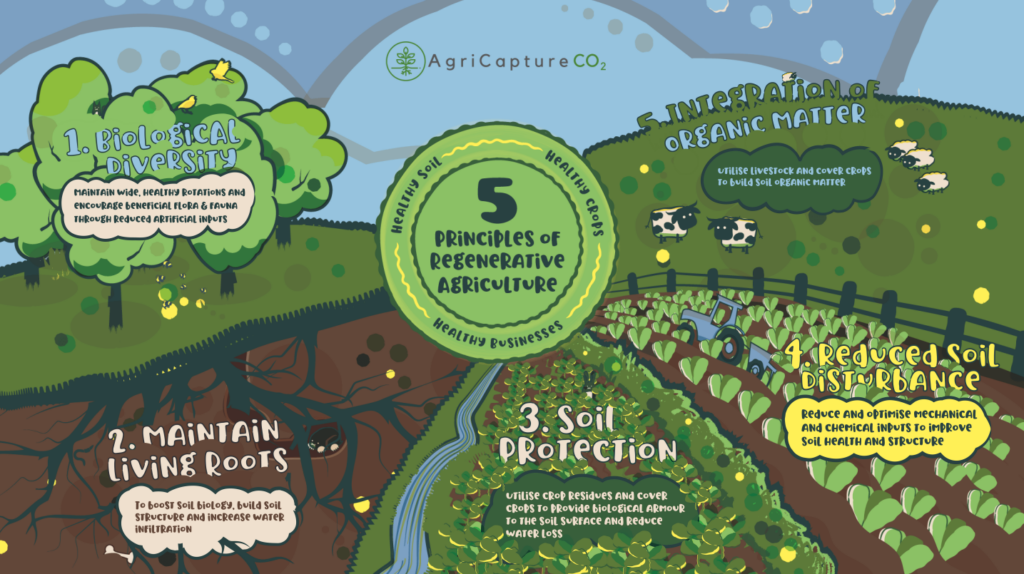By Joe Stanley, Head of Training & Partnerships, The Allerton Project
3 minute read
Once again, growers have been struggling in recent weeks with what has been for most yet another prolonged period of dry weather. A look at the Met Office data for 2022 shows that the spectre of climate change hangs over us on a now constant basis. January, March and April were all unusually dry, with most regions of the UK receiving between 20-50% of normal rainfall; February was unusually wet, with many areas receiving 175-200% of the norm.
The impact that lack of moisture may have on harvest 2022 will be compounded by the exceptional price pressures being applied on-farm by the Russian invasion of Ukraine and its attendant impact on the global food supply chain. In the UK, it has been a major element in seeing average agricultural input inflation rise by nearly 50% in the past 18 months according to data compiled by the AF Group.
In these circumstances, farmers and growers must look as never before to building resilience into both their soils and their businesses. Two particularly interesting projects we are currently participating in at the Allerton Project may offer some help in this regard.

AgriCaptureCO2 is a consortium EU Horizon 2020 project with a dual aim. Firstly, it recognises that widespread adoption of ‘regenerative’ farming principles has the potential to play a vital role in reversing the current climate trend: not only do we need to reduce our emissions as a society, but we must also devise means of reducing the existing stocks of greenhouse gasses in the atmosphere.
Focussing on soil health – and particularly on soil organic matter/carbon levels – is the surest means to achieve this on a significant scale in the medium term. The Allerton Project is involved with creating a European ‘Regenerative Agricultural Community’ to help farmers of all sizes and types move down the sustainable road, utilising the five key principles of increased biodiversity, increased soil cover, maintenance of living roots, reduced soil disturbance and increased input of organic material. With increased soil health comes increased water infiltration and water holding capacity, building resilience into farm soils during extreme weather events and leaving us less at the mercy of the elements.
The second part of the project aims to provide a low-cost means of quantifying the impact of those regenerative practices on soil carbon on a landscape scale utilising remote sensing, earth observation satellite data and sophisticated computer modelling. The intention is that this synthesis of data will reduce the need for ground truthing – physical soil sampling – to a bare minimum, and thus reduce the cost and complexity for the farmer of one day engaging in carbon trading schemes. It’s also critical that any carbon traded is truly ‘additional’, not just a spreadsheet exercise to allow pollution to continue.
We are also in the fifth year of a Conservation Agriculture trial with Syngenta, assessing in minute detail the impact of adopting a reduced tillage approach to a 5-crop rotation; the interim findings make for compelling reading. After four years of comparison between a direct-drilled and continuously ploughed system on our heavy clay, we can demonstrate a 47% comparative drop in fuel use, 48% increase in work-rate and 19% increase in profitability/ha – despite a 7-8% drop in establishment and yield.

This demonstrates the value of the cost savings in such a system. The figures for the light land comparison site at Lenham in Kent are even more impressive, with a 36% increase in profitability. Added to this is a 10% drop in total GHG emission/ha, though it is still relatively early to assess what increase in soil organic matter we may see as a result of the CA approach.
Farmers must remain very cautious of carbon markets in the absence of agreed metrics or a soil carbon code, but moving toward more sustainable farming practices must be high on our agenda; regardless of carbon trades, healthier, more resilient soils and farming systems which enable us to exploit narrower weather windows and reduce inputs while returning a greater profit must be recognised for the massive boon that they are.
This piece first appeared in Agronomist & Arable Farmer
Please help our team continue their vital conservation research by giving what you can. All payment cards, PayPal, Apple Pay and Google Pay accepted.
